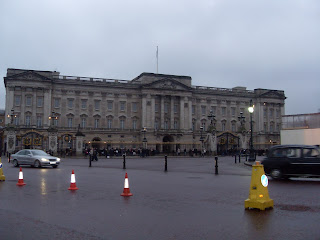So up until this past weekend, the closest I had been to London was sitting in the train station at Paddington to catch my train to Bath. That changed with my recent travel to the Capital. We left early Saturday morning on the train to London from Bath Spa. We were into the city via the Underground by 9:00AM. So all we had to do was find our Hostel. This is the part where I mention that Google Maps is a lying and cruel mistress. So the directions I had printed seemed to take into account a seemingly fictional road. Luckily we walked past a Police Station and stopped in to ask for directions. They told us to go through a tunnel and that we would be right there...okay, seems fair. Problem is they didn't specify what tunnel and there happened to be two. We went through the first we found. Bad idea.


Alright so we walk 1600 Yards, that is more than 4000 feet, nearly a mile under the tunnel. By the middle, I am lightheaded by inhaling a bit too much co2 from the cars in there. At the halfway point, I begin belting Bon Jovi's "Living on a Prayer"...badly. We finally get to the end. Thats when it hits us...We just walked under the Thames...our Hostel is still on the other side. Luckily, with the help of a runner and our travel cards, we caught the Docklands Light Rail (DLR) and then the Overground to a station right near our Hostel. In other words, we took the National Rail, Underground, Overground and DLR in 2 hours...quite amazing actually.

So we finally got to the hostel and settled in. We took a lunch at The Old Salt Quay (pronounced Kee) and planned out our day. Luckily we had Katie. Katie is a mentor to the students here with the ASE program and a student at Bath Spa University. She happen to live in London. She thus helped us plot out our day and ended up giving us a grand tour of the City.
In Greenwich where I straddled the Prime Meridian of the World.
Outside Westminster Station to see the London Eye.
We got in just in time to hear Big Ben Strike 4.
Then took in Westminster Abbey
Swung by Downing although we didn't get to see 10.
Then we went to Buckingham Palace.
Trafalgar Square
And ended our first night in Piccadilly Circus.
Went back to our Hostel and hit a Pub for the night. A true London pub, played darts, snooker, and sung some Karaoke. Spent the night at the Hostel. Austin and I had a few roommates but they didn't get in till after two. They had had a few but they were respectful of us...seemed like nice enough guys.
So the next morning we resumed our tour.
King's Cross. We got to see Platform 9 and 3/4.
The Tower of London
The Tower Guards have the greatest uniforms of all time.
The British Museum
The Rosetta Stone
A Clockwork Automaton ship. It rolls across a table and then fires it's guns while the men on board move about
Statues from the Parthenon. This is really cool until you realize they were obtained illegally. Then it is just awkward.
View of Tower Bridge and the HMS Belfast from London Bridge.
Overall, It was a great trip although I can't wait to visit again on a day trip so I can go into the Tower as well as see the changing of the guard and the Imperial War Museum.













































